Spine Stiffnessaccording to TCM
Symptom family: Back and Neck Stiffness and Discomfort
Did you mean? Back Stiffness
What is Spine Stiffness?
Spine stiffness, a common musculoskeletal complaint, refers to a lack of flexibility and movement in the backbone. This condition is characterized by rigidity and discomfort in the spinal area, which can encompass the entire spine or be localized in specific sections like the cervical, thoracic, or lumbar regions.
Spine stiffness can significantly affect one’s mobility and quality of life, often requiring medical attention for relief and management.
How does TCM view Spine Stiffness?
Traditional Chinese Medicine (TCM) perceives spine stiffness through a holistic lens, focusing on the flow and balance of Qi (vital energy) and Blood within the body. In TCM, stiffness is often seen as a result of blockages or imbalances in these energies.
External factors such as environmental influences, emotional stress, and physical strain can disrupt this balance, leading to stiffness. TCM practitioners use various techniques like acupuncture, herbal medicine, and moxibustion to address the root cause of the stiffness, aiming to restore the smooth flow of Qi and Blood, and hence alleviate the symptoms.
Acupoints for Spine Stiffness
TCM employs specific acupoints to alleviate spine stiffness effectively. Points such as Dazhu BL-11 and Ganshu BL-18 on the Bladder Channel are crucial for nourishing blood, expelling wind, and resolving Damp-Heat, which are often associated with spinal issues.
Geguan BL-46 is used for easing pain and regulating Qi, particularly around the thoracic area. Wuchu BL-5 helps in expelling Interior Wind and subduing liver Qi, contributing to relief from stiffness. The Governing Vessel's Jinsuo DU-8 is another vital point known for its effectiveness in calming the mind and relieving spasms, thereby aiding in spinal flexibility.
Additionally, the Kidney Channel’s Shiguan KID-18 plays a role in regulating Qi and blood in the lower burner and easing pain, making it a strategic point for addressing lower spinal stiffness.
By stimulating these acupoints, TCM practitioners can significantly contribute to reducing spine stiffness, improving mobility, and enhancing overall spinal health.
Explore below some acupoints used to address spine stiffness, organized by meridian.
- By Meridian
- Bladder Channel
- Governing Vessel
- Kidney Channel
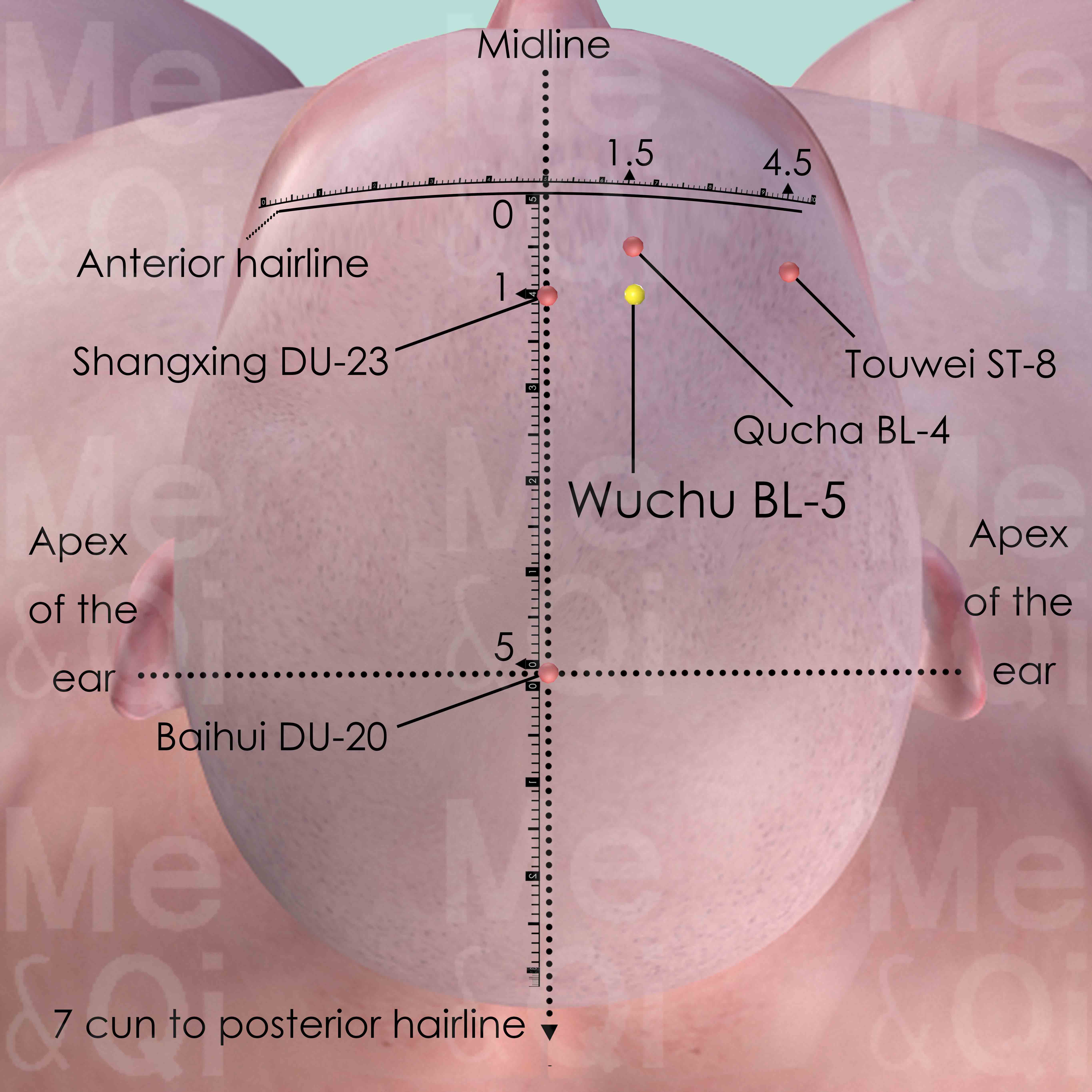
Wuchu BL-5
1 cun within the anterior hairline and 1.5 cun lateral to the anterior midline. It is also 0.5 cun posterior to Quchai BL-4.
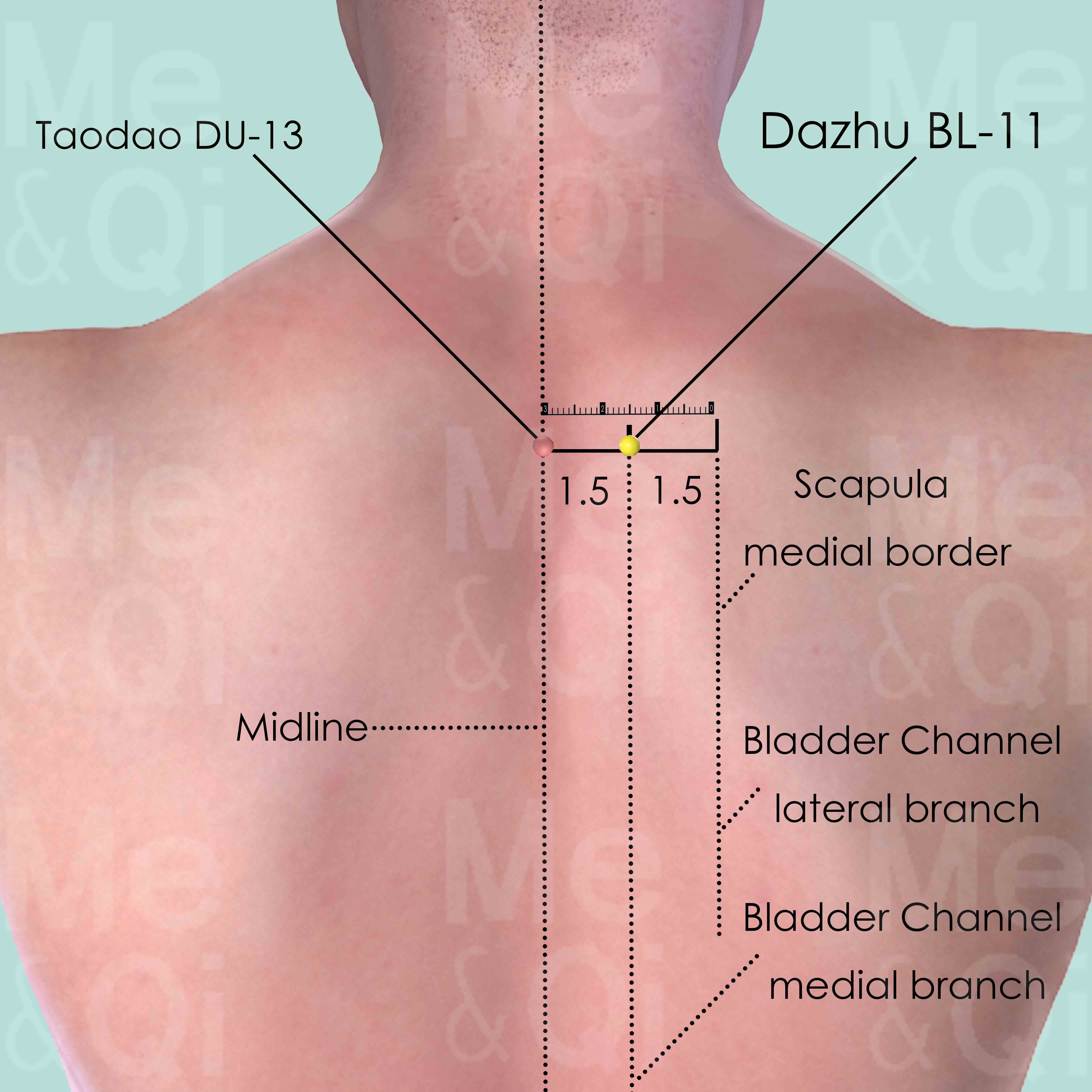
Dazhu BL-11
On the level of the lower border of the spinous process of the 1st thoracic vertebra (T1), 1.5 cun (about 2 finger-breadths) lateral to the posterior midline.
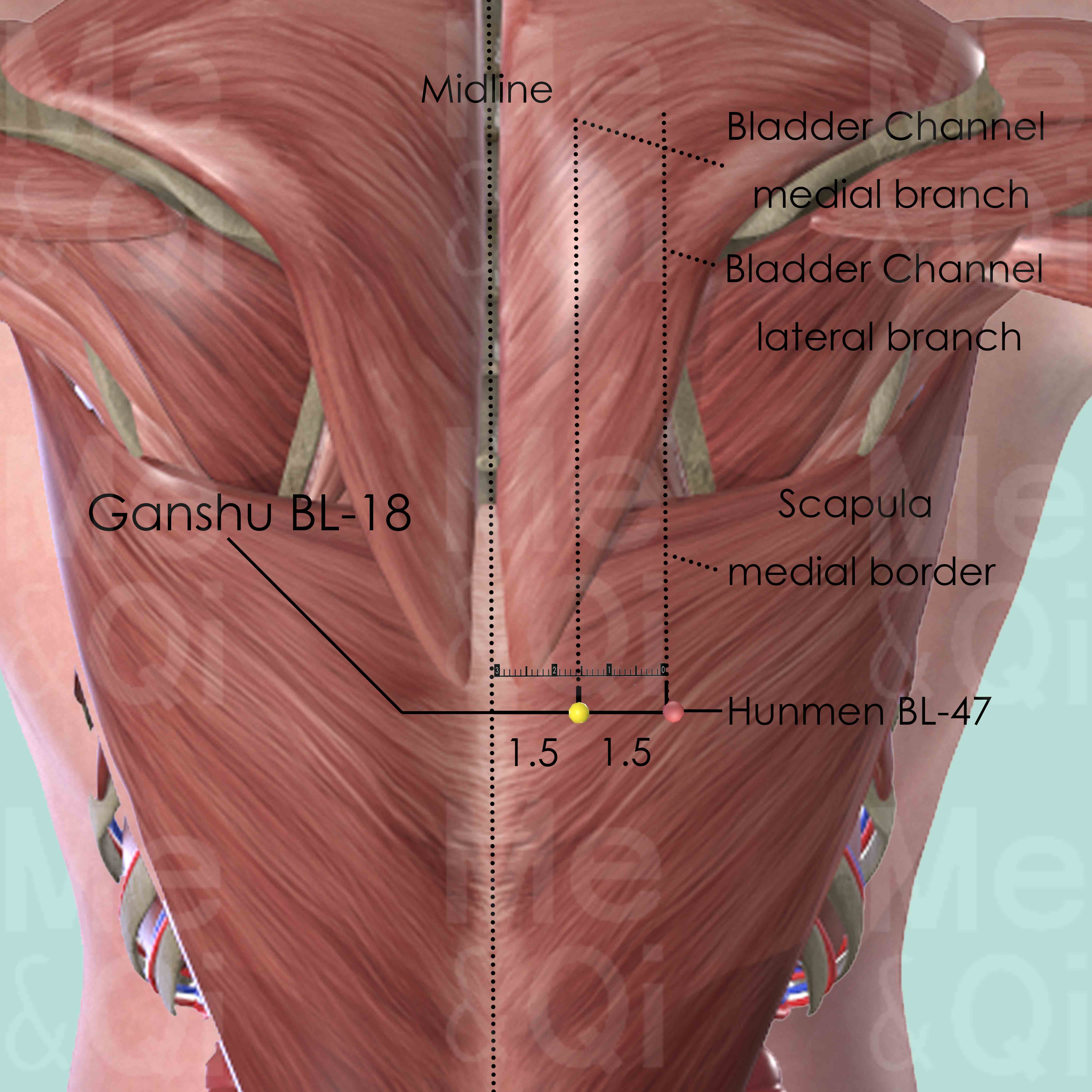
Ganshu BL-18
1.5 cun lateral to the lower border of the spinous process of the 9th thoracic vertebra (T9).
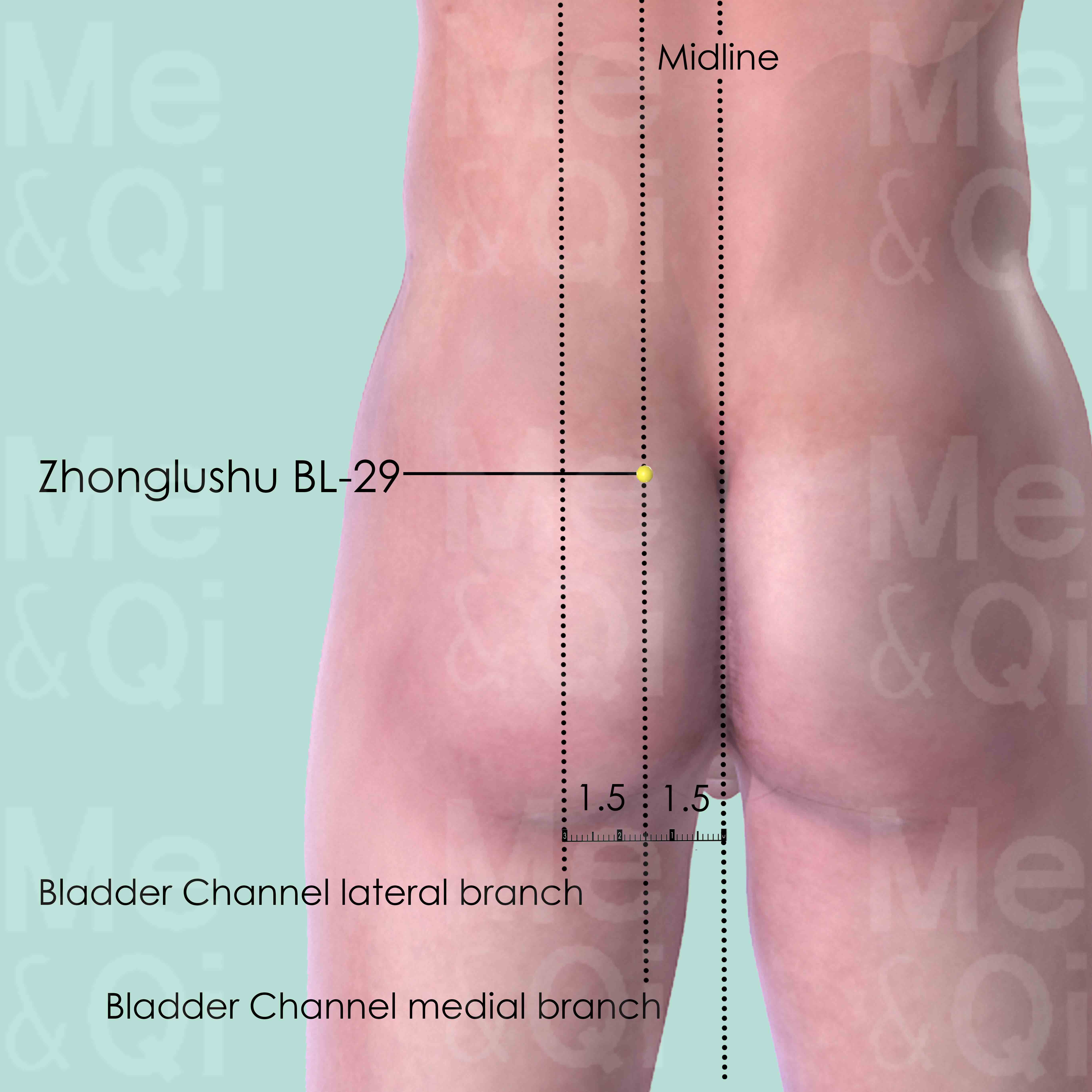
Zhonglushu BL-29
At the level of the 3rd posterior sacral foramen, 1.5 cun lateral to the posterior midline.
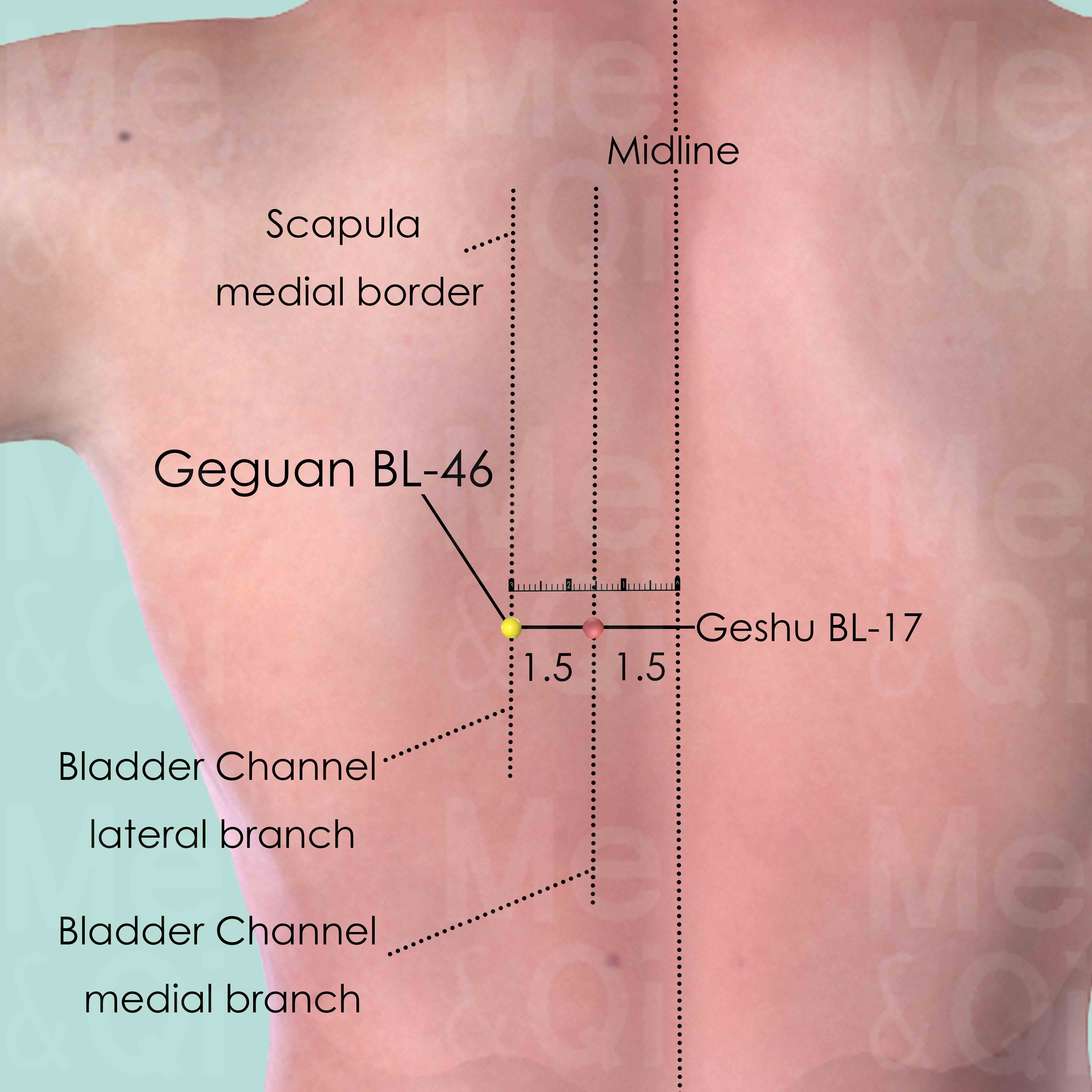
Geguan BL-46
3 cun (about 4 finger-breadths) lateral to the lower border of the spinous process of the 7th thoracic vertebra (T7).
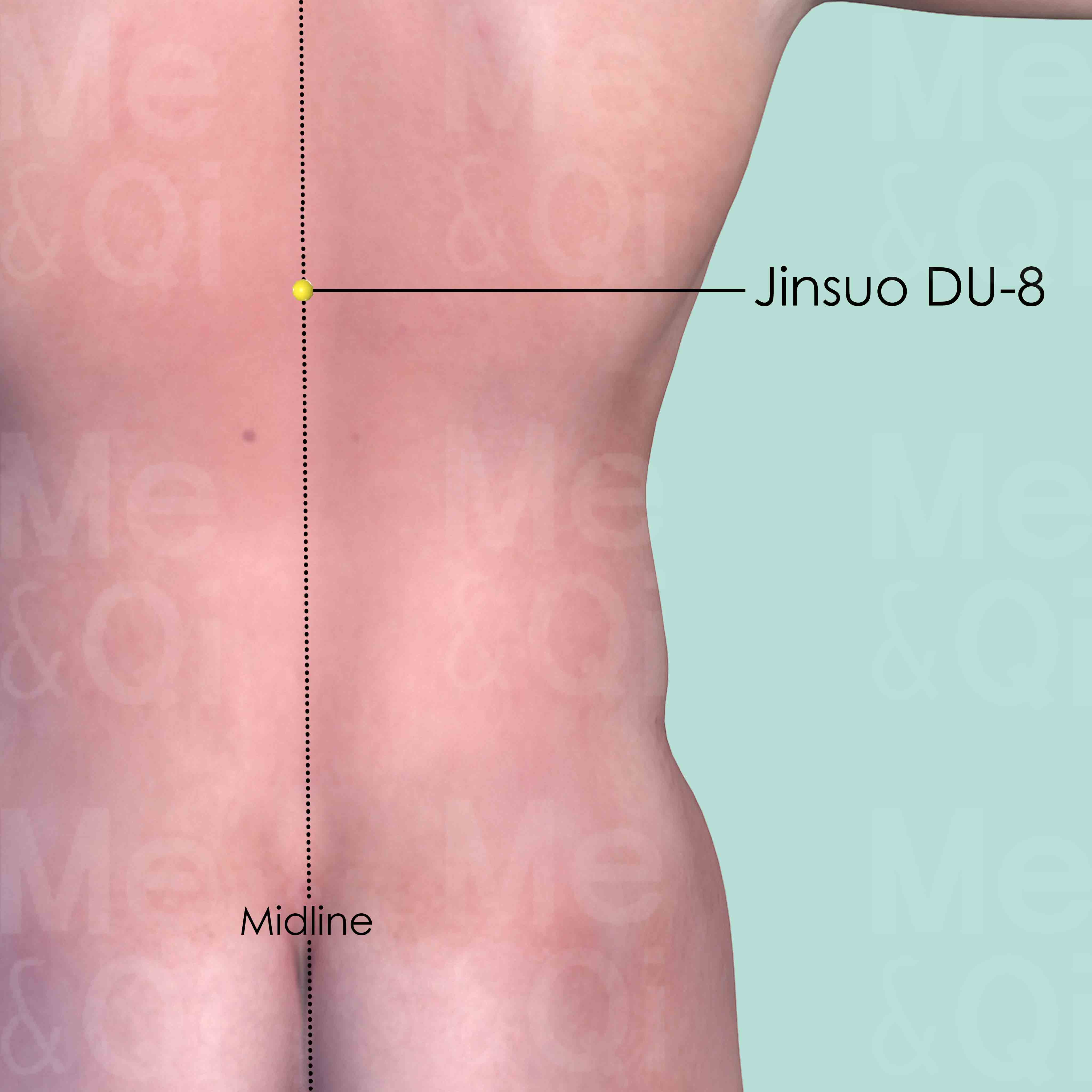
Jinsuo DU-8
On the back midline, in the depression below the spinous process of the 9th thoracic vertebra (T9).

